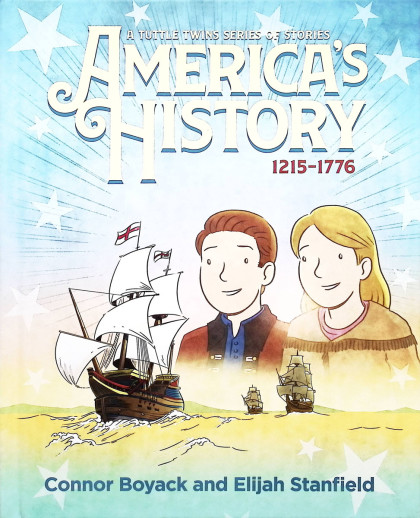We use cookies to make your experience better. To comply with the new e-Privacy directive, we need to ask for your consent to set the cookies. Learn more.
America's History Volume 1 1215-1776
Join the Tuttle Twins on an adventure that your whole family will love! From 1215 to 1776 so many people, ideas, and events played a part in forming foundational principles that would birth a new type of country--- where freedom rings. Immerse yourself in America’s history, learning exciting lessons from the past that will help create a better future. This is history we can ALL get excited about! 230 pgs, hc. ~Nancie
Our 240-page book on American history is unlike any other. Where other textbooks for kids focus on what happened, we focus on why it all happened. Where other books ignore the ideas behind the Revolution, our book is full of them.
Join Ethan and Emily through a series of stories that share the inspiring events and powerful ideas behind the founding of America. This is an essential book for every freedom-loving family who wants their children to learn about America’s past so we can create a better future together.
Kids CAN love history! No dry textbooks here… With help from the Tuttle twins, these stories from America’s past will captivate your children! Text is conversational and filled with colorful illustrations. Kids learn important lessons that are relevant to their lives TODAY, laying a foundation to guide them into the future. This is not a traditional curriculum with a daily schedule/lesson structure. So, families move through chapters at their own pace. Throughout the book are “More About This!” sections, helping students to dig deeper. A “Let’s Talk About It!” section at the end of each chapter encourages students to reflect on what they’ve learned and prompts them with questions to ponder, perfect for discussion as a family (sometimes an activity is suggested). America’s History is divided into two books, Volume 1 covering 1215-1776 and Volume 2 from1776-1791.

